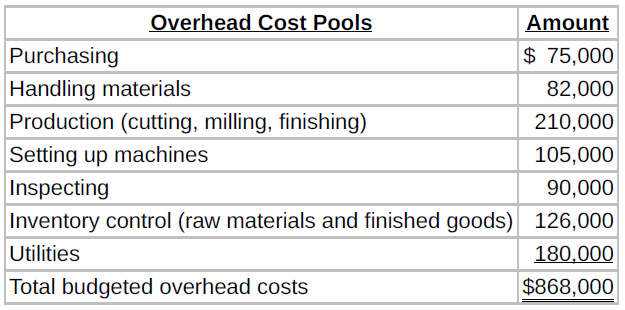Shaker Stairs Co. designs and builds factorymade premium wooden stairways for homes. The manufactured stairway components (spindles,
Question:
Shaker Stairs Co. designs and builds factorymade premium wooden stairways for homes. The manufactured stairway components (spindles, risers, hangers, hand rails) permit installation of stairways of varying lengths and widths. All are of white oak wood. Budgeted manufacturing overhead costs for the year 2020 are as follows.

For the last 4 years, Shaker Stairs Co. has been charging overhead to products on the basis of machine hours. For the year 2020, 100,000 machine hours are budgeted. Jeremy Nolan, owner-manager of Shaker Stairs Co., recently directed his accountant, Bill Seagren, to implement the activity-based costing system that he has repeatedly proposed. At Jeremy Nolan's request, Bill and the production foreman identify the following cost drivers and their usage for the previously budgeted overhead cost pools.

Steve Hannon, sales manager, has received an order for 250 stairways from Community Builders, Inc., a large housing development contractor. At Steve's request, Bill prepares cost estimates for producing components for 250 stairways so Steve can submit a contract price per stairway to Community Builders. He accumulates the following data for the production of 250 stairways.

Instructions
a. Compute the predetermined overhead rate using traditional costing with machine hours as the basis.
b. What is the manufacturing cost per stairway under traditional costing? (Round to the nearest cent.)
c. What is the manufacturing cost per stairway under the proposed activity-based costing? (Round to the nearest cent. Prepare all of the necessary schedules.)
d. Which of the two costing systems is preferable in pricing decisions and why?
Step by Step Answer:

Financial and Managerial Accounting
ISBN: 978-1119392132
3rd edition
Authors: Jerry J. Weygandt, Paul D. Kimmel, Donald E. Kieso





